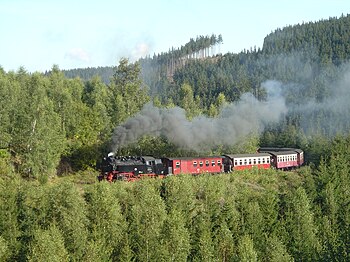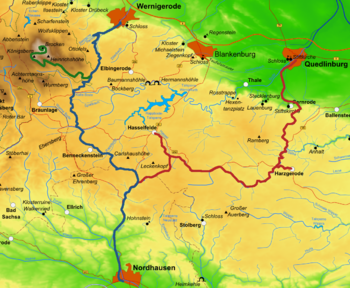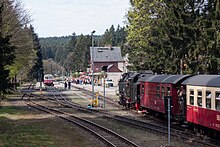Harzquerbahn
| Nordhausen North – Wernigerode | |||||||||||||||||||||||||||||||||||||||||||||||||||||||||||||||||||||||||||||||||||||||||||||||||||||||||||||||||||||||||||||||||||||||||||||||||||||||||||||||||||||||||||||||||||||||||||||||||||||||||||||||||||||||||||||||||||||||||||||||||||||||||||||||||||||||||||||||||||||||||||||||||||||||||||||||||||||||||||||||||||||||||||||||||||||||||||||||||
|---|---|---|---|---|---|---|---|---|---|---|---|---|---|---|---|---|---|---|---|---|---|---|---|---|---|---|---|---|---|---|---|---|---|---|---|---|---|---|---|---|---|---|---|---|---|---|---|---|---|---|---|---|---|---|---|---|---|---|---|---|---|---|---|---|---|---|---|---|---|---|---|---|---|---|---|---|---|---|---|---|---|---|---|---|---|---|---|---|---|---|---|---|---|---|---|---|---|---|---|---|---|---|---|---|---|---|---|---|---|---|---|---|---|---|---|---|---|---|---|---|---|---|---|---|---|---|---|---|---|---|---|---|---|---|---|---|---|---|---|---|---|---|---|---|---|---|---|---|---|---|---|---|---|---|---|---|---|---|---|---|---|---|---|---|---|---|---|---|---|---|---|---|---|---|---|---|---|---|---|---|---|---|---|---|---|---|---|---|---|---|---|---|---|---|---|---|---|---|---|---|---|---|---|---|---|---|---|---|---|---|---|---|---|---|---|---|---|---|---|---|---|---|---|---|---|---|---|---|---|---|---|---|---|---|---|---|---|---|---|---|---|---|---|---|---|---|---|---|---|---|---|---|---|---|---|---|---|---|---|---|---|---|---|---|---|---|---|---|---|---|---|---|---|---|---|---|---|---|---|---|---|---|---|---|---|---|---|---|---|---|---|---|---|---|---|---|---|---|---|---|---|---|---|---|---|---|---|---|---|---|---|---|---|---|---|---|---|---|---|---|---|---|---|---|---|---|---|---|---|---|---|---|---|---|---|---|---|---|---|---|---|---|---|---|---|---|---|---|---|---|---|---|---|
|
Steam train on the Harzquerbahn (2007)
| |||||||||||||||||||||||||||||||||||||||||||||||||||||||||||||||||||||||||||||||||||||||||||||||||||||||||||||||||||||||||||||||||||||||||||||||||||||||||||||||||||||||||||||||||||||||||||||||||||||||||||||||||||||||||||||||||||||||||||||||||||||||||||||||||||||||||||||||||||||||||||||||||||||||||||||||||||||||||||||||||||||||||||||||||||||||||||||||||
|
The blue marking corresponds to the course of the Harzquerbahn
| |||||||||||||||||||||||||||||||||||||||||||||||||||||||||||||||||||||||||||||||||||||||||||||||||||||||||||||||||||||||||||||||||||||||||||||||||||||||||||||||||||||||||||||||||||||||||||||||||||||||||||||||||||||||||||||||||||||||||||||||||||||||||||||||||||||||||||||||||||||||||||||||||||||||||||||||||||||||||||||||||||||||||||||||||||||||||||||||||
| Route number (DB) : | 9700 | ||||||||||||||||||||||||||||||||||||||||||||||||||||||||||||||||||||||||||||||||||||||||||||||||||||||||||||||||||||||||||||||||||||||||||||||||||||||||||||||||||||||||||||||||||||||||||||||||||||||||||||||||||||||||||||||||||||||||||||||||||||||||||||||||||||||||||||||||||||||||||||||||||||||||||||||||||||||||||||||||||||||||||||||||||||||||||||||||
| Course book section (DB) : | 326 Nordhausen – Drei Annen Hohne. 325 Drei Annen Hohne – Wernigerode |
||||||||||||||||||||||||||||||||||||||||||||||||||||||||||||||||||||||||||||||||||||||||||||||||||||||||||||||||||||||||||||||||||||||||||||||||||||||||||||||||||||||||||||||||||||||||||||||||||||||||||||||||||||||||||||||||||||||||||||||||||||||||||||||||||||||||||||||||||||||||||||||||||||||||||||||||||||||||||||||||||||||||||||||||||||||||||||||||
| Route length: | 60.5 km | ||||||||||||||||||||||||||||||||||||||||||||||||||||||||||||||||||||||||||||||||||||||||||||||||||||||||||||||||||||||||||||||||||||||||||||||||||||||||||||||||||||||||||||||||||||||||||||||||||||||||||||||||||||||||||||||||||||||||||||||||||||||||||||||||||||||||||||||||||||||||||||||||||||||||||||||||||||||||||||||||||||||||||||||||||||||||||||||||
| Gauge : | 1000 mm ( meter gauge ) | ||||||||||||||||||||||||||||||||||||||||||||||||||||||||||||||||||||||||||||||||||||||||||||||||||||||||||||||||||||||||||||||||||||||||||||||||||||||||||||||||||||||||||||||||||||||||||||||||||||||||||||||||||||||||||||||||||||||||||||||||||||||||||||||||||||||||||||||||||||||||||||||||||||||||||||||||||||||||||||||||||||||||||||||||||||||||||||||||
| Maximum slope : | 33 ‰ | ||||||||||||||||||||||||||||||||||||||||||||||||||||||||||||||||||||||||||||||||||||||||||||||||||||||||||||||||||||||||||||||||||||||||||||||||||||||||||||||||||||||||||||||||||||||||||||||||||||||||||||||||||||||||||||||||||||||||||||||||||||||||||||||||||||||||||||||||||||||||||||||||||||||||||||||||||||||||||||||||||||||||||||||||||||||||||||||||
| Minimum radius : | 60 m | ||||||||||||||||||||||||||||||||||||||||||||||||||||||||||||||||||||||||||||||||||||||||||||||||||||||||||||||||||||||||||||||||||||||||||||||||||||||||||||||||||||||||||||||||||||||||||||||||||||||||||||||||||||||||||||||||||||||||||||||||||||||||||||||||||||||||||||||||||||||||||||||||||||||||||||||||||||||||||||||||||||||||||||||||||||||||||||||||
| Top speed: | 40 km / h | ||||||||||||||||||||||||||||||||||||||||||||||||||||||||||||||||||||||||||||||||||||||||||||||||||||||||||||||||||||||||||||||||||||||||||||||||||||||||||||||||||||||||||||||||||||||||||||||||||||||||||||||||||||||||||||||||||||||||||||||||||||||||||||||||||||||||||||||||||||||||||||||||||||||||||||||||||||||||||||||||||||||||||||||||||||||||||||||||
|
|||||||||||||||||||||||||||||||||||||||||||||||||||||||||||||||||||||||||||||||||||||||||||||||||||||||||||||||||||||||||||||||||||||||||||||||||||||||||||||||||||||||||||||||||||||||||||||||||||||||||||||||||||||||||||||||||||||||||||||||||||||||||||||||||||||||||||||||||||||||||||||||||||||||||||||||||||||||||||||||||||||||||||||||||||||||||||||||||
The Harzquerbahn connects the cities of Nordhausen in Thuringia and Wernigerode in Saxony-Anhalt as a narrow-gauge railway in meter gauge . The single-track, non-electrified line crosses the Harz in a north-south direction. The operators are the Harzer Schmalspurbahnen (HSB).
Route
The traditional south end of Harzquerbahn is the railhead Nordhausen . It lies northwest and parallel to the standard gauge Nordhausen station of the Deutsche Bahn . However, more than half of the train journeys between Nordhausen and Ilfeld are carried out with hybrid multiple units of the Nordhauser tram , which run on a connecting track north of the train station to the tram stop on the Bahnhofsplatz and further into the city. To the west of the tram connection, the line turns to the north, runs around 7 kilometers through Nordhausen and on through Niedersachswerfen to the Niedersachswerfen Ost train station, almost parallel to the standard-gauge southern Harz line to Northeim . The Harz begins behind the town of Ilfeld (km 10.7) . After the Netzkater stop (km 14.0) follows the now unoccupied Eisfelder Talmühle station (km 17.3, a former joint station of the Nordhausen-Wernigeroder Railway and the Gernrode-Harzgeroder Railway ). Behind the Eisfelder Talmühle train station, the Selketalbahn runs in the direction of the stairs in a right-hand curve. In the Eisfelder Talmühle station, the only double exit of two steam locomotives in the Harz is regularly experienced in summer (in the direction of Stiege and Brocken ).
As far as the Tiefenbachmühle stop (km 19.5), the Harzquerbahn follows the federal highway 81 , then it turns west to reach the Sophienhof stop (km 21.0) - the last stop in Thuringia . The route leads through spruce forest over the state border to Saxony-Anhalt . At the Benneckenstein station (km 29.8) the train reaches 530 m above sea level. NN its highest point so far. Then it goes down to the valley of the Warmen Bode , where the Sorge stop (km 33.4; 449 m above sea level ) is located. Then the route climbs to its apex at 557 m . After Elend train station (km 41.6), the line reaches the confluence of the Brocken Railway in Drei Annen Hohne train station (km 46.4).
Behind Drei Annen Hohne it goes steeply downhill and the train reaches the 58 meter long tunnel under the Thumkuhlenkopf . It is the only tunnel in the network of the Harz narrow-gauge railways. Wernigerode Castle can soon be seen in the distance behind the tunnel exit .
Near the Steinerne Renne train station (km 54.5), the line runs through one of the HSB's narrowest arches with a 60 m radius until it reaches the Wernigerode-Hasserode train station (km 56.3). The next stops are the Harz University of Applied Sciences (formerly: Wernigerode-Kirchstraße ) and the Westerntor train station (where the Wernigerode-Westerntor depot is located ) in Wernigerode.
The north end is the Wernigerode train station (km 60.5), the reception building of which is at right angles to the Wernigerode train station on the DB Vienenburg – Halberstadt line .
history
As the first section of the Harzquerbahn, the Nordhausen – Ilfeld line went into operation on July 12, 1897, followed by the line to Netzkater on February 7, 1898 and to Benneckenstein on September 15 of the same year. From the north, the section from Wernigerode to Drei Annen Hohne was completed on June 20, 1898. The missing piece between Drei Annen Hohne and Benneckenstein was finally handed over to operation on March 27, 1899, together with the route to the Brocken . The operating company was originally the Nordhausen-Wernigeroder Eisenbahn-Gesellschaft (NWE). After nationalization , the Deutsche Reichsbahn operated from April 1, 1949 until 1993.
From 1899 the Harzquerbahn crossed in Sorge the meter-gauge route Walkenried –Brunnenbachsmühle – Sorge– Tanne of the Südharz Railway (SHE). A connecting track, initially only for passenger traffic , was not built until 1913. In 1945, operations between Sorge and Brunnenbachsmühle ceased because this section crossed the inner-German border . The section from Sorge to Tanne continued to operate until 1958. The tracks remained on the border bridge until after the fall of the Berlin Wall in 1989.
On May 1, 2004, before the entrance to the Nordhausen Nord train station, a long-planned connecting track to the Nordhausen tram was put into operation, construction of which had begun in 2002. Therefore, since May 1, 2004, trams on line 10 with electric and hybrid drives of the CombinoDuo type have been running between the Nordhausen Hospital tram stop and the HSB Ilfeld-Neanderklinik stop . In the area of the Harz Cross Railway, the drive is diesel-electric.
The Nordhausen Nord station lost its importance due to the connecting track to the Nordhausen tram. With the exception of the pair of steam trains from Nordhausen and a few HSB diesel multiple units, since then all trains have been running as diesel multiple units from the Nordhausen Bahnhofsplatz tram stop .
Train operation
passenger traffic
On the Nordhausen – Ilfeld section, train operations were heavily concentrated after the fall of the Berlin Wall. Since 2004, in addition to the HSB trains, trams from Ilfeld Neanderklinik have been running every hour (every two hours on weekends and public holidays) via the tram network from Nordhausen to the hospital (line 10). Additional HSB diesel railcars run to Eisfelder Talmühle and on to the Selketalbahn. With the exception of a remaining pair of steam trains to the Brocken , all regular train services between Nordhausen and Eisfelder Talmühle are now provided by diesel railcars and trams.
After 1997, daily passenger traffic between Eisfelder Talmühle and Drei Annen Hohne was reduced to four pairs of trains. Two pairs of trains are hauled by steam locomotives (direct train to the Brocken), the other two (early and late trains) are driven by a diesel multiple unit.
Between Drei Annen Hohne and Wernigerode, the route has the highest route utilization in the HSB network. The reason for this is the touristically important steam trains on the Wernigerode – Drei Annen Hohne – Brocken route.
In the years 2009/2010, a new construction of a branch line from Elend to Braunlage was discussed (see Südharzeisenbahn ). The project was abandoned on April 29, 2010 because of the high (operating) costs.
The transport contract with the state of Thuringia was extended on November 24, 2014, so that passenger traffic with HSB trains and trams of the Nordhausen tram will continue.
Freight transport
The only remaining freight traffic of the Harz narrow-gauge railways takes place between Nordhausen and Unterberg : normal-gauge ballast wagons are regularly transported on roller blocks from the Unterberg hard stone works ( Selketalbahn ) to the transfer station in Nordhausen. Two converted diesel locomotives of the 199.8 series are available for this, which have pulling and pushing devices for standard-gauge freight wagons at the appropriate height.
Operating facilities
The Harzquerbahn locomotive deployment points are located in Wernigerode and Nordhausen Nord (Wernigerode also Brockenbahn, Nordhausen Nord also for trains of the Selketalbahn). From there, the vehicles are used on a daily basis, including the necessary ancillary work.
Major maintenance work is carried out in the HSB's central railway depot in Wernigerode-Westerntor. This includes the complete (deadline) examinations and other repair work (except main inspections ). At the Westerntor train station, boiler water samples are taken from every train. For those interested, guided tours through the Westerntor depot are offered. Despite some modern technology, this is still a typical steam locomotive workshop.
To protect the wagon sets from the weather, a large wagon hall with a washing facility was built at the former Wernigerode transfer station.
vehicles
A list of the locomotives can be found in the article " Harzer Schmalspurbahnen " .
literature
- Literature from and about Harzquerbahn in the catalog of the German National Library
- Jörg Bauer: 100 years of Harzquer and Brocken Railway. EK-Verlag, Freiburg 1999, ISBN 3-88255-685-4 .
- Manfred Bornemann, Hans Dörner (editor): 75 years of Harzquerbahn and Brockenbahn. Publisher H. Greinert, Clausthal-Zellerfeld 1975.
- Klaus-Jürgen Kühne: Everything about narrow-gauge railways in the Harz. Transpress Verlag, Stuttgart 2008, ISBN 978-3-613-71344-4 .
- Ulrich Nitschke: The Harzquer and Brocken Railway. Transpress - VEB Publishing House for Transport, Berlin 1978.
- Gerhard Zieglgänsberger, Hans Röper: The Harz narrow-gauge railways. Transpress Verlag, Stuttgart 1999, ISBN 3-613-71103-6 .
Movie
- SWR: Railway Romanticism - The Harzquerbahn (episode 327)
Web links
- Harzer Narrow Gauge Railways GmbH
- Interest group Harzer narrow-gauge railways
- Route data (from Freundeskreis Selketalbahn eV)
- Crossing the Warmen Bode by the Harzquerbahn (Youtube)
- Travel report from 1982
- Walpurgis trip in 2004
- Tradition of the Harzquerbahn in the holdings of the Reichsbahndirektion Magdeburg in the State Archives Saxony-Anhalt, Dessau department
Individual evidence
- ↑ Railway Atlas Germany 2007/2008 . 6th edition. Schweers + Wall, Aachen 2007, ISBN 978-3-89494-136-9 .
- ↑ Information and pictures about the tunnels on route 9700 on eisenbahn-tunnelportale.de by Lothar Brill
- ↑ Newspaper of the Association of German Railway Administrations , Volume 39, No. 27 (April 8, 1899), p. 463.
- ↑ Publication of the Harzer Schmalspurbahnen interest group ( Memento from July 19, 2011 in the Internet Archive )










